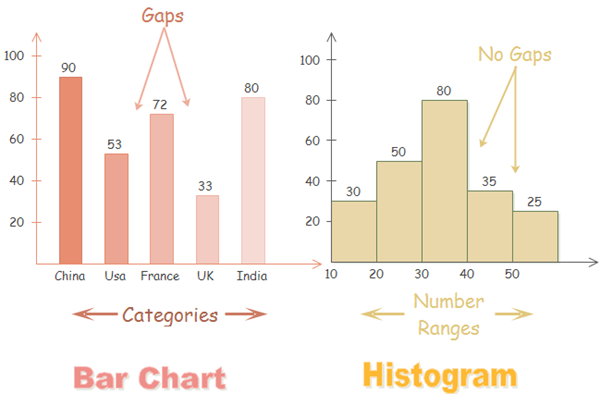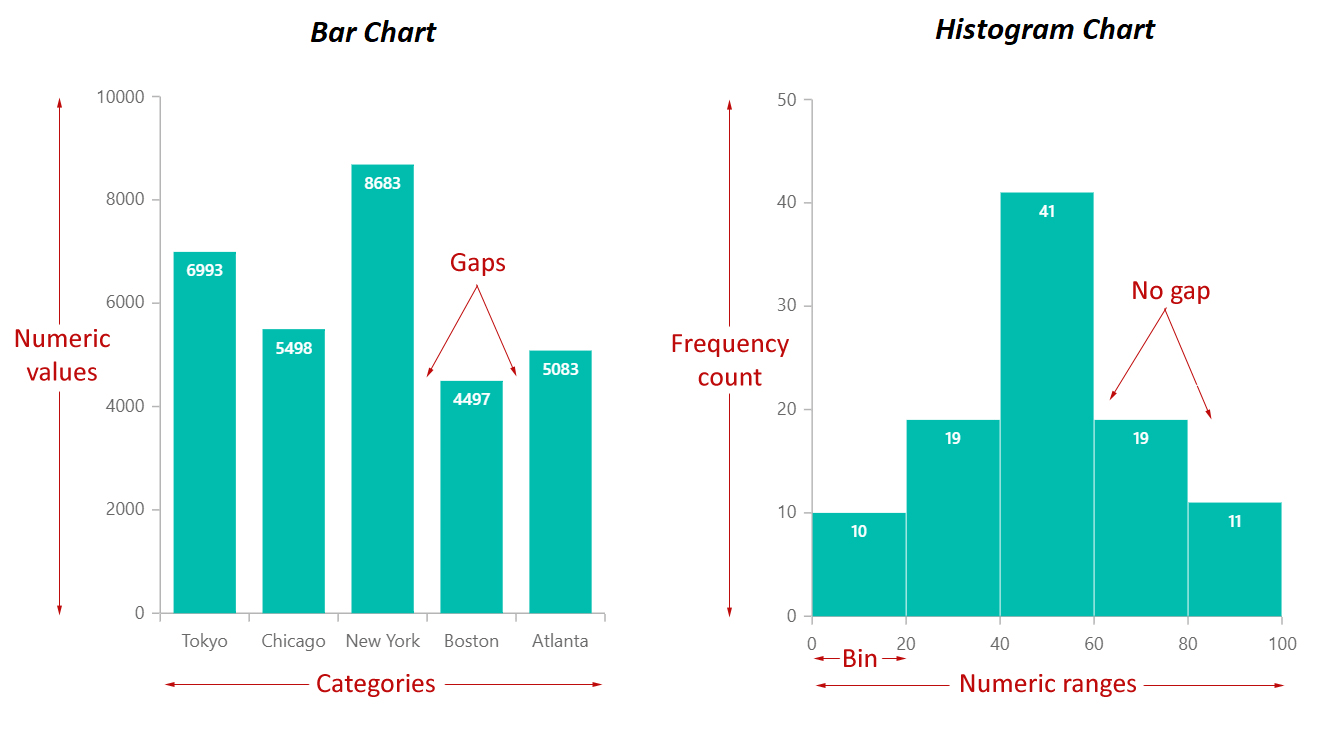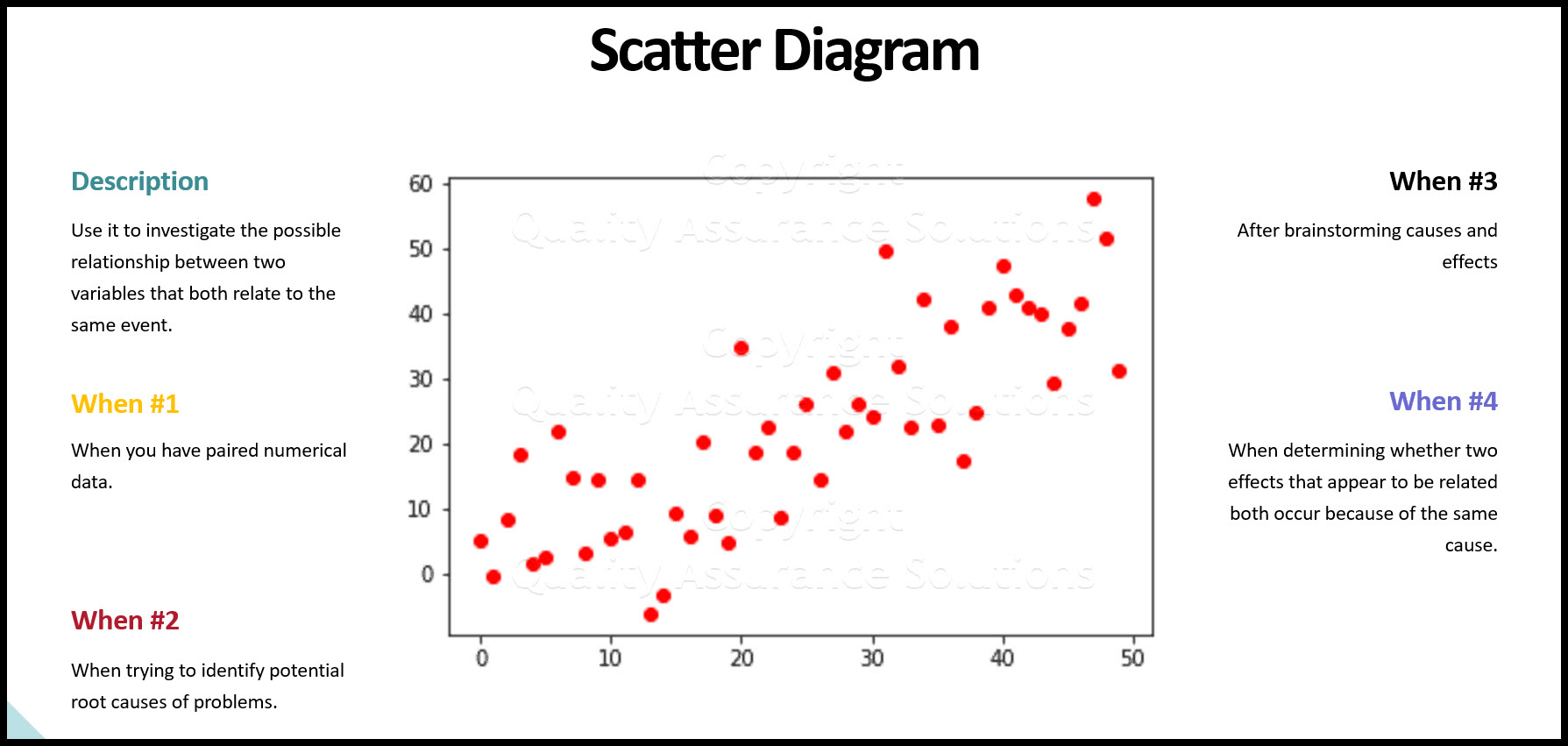Bar between histogram difference graph charts chart vs histograms use comparison why main bars
Table of Contents
Table of Contents
Bar Chart and Histogram are some of the most commonly used methods to represent data in a graphical manner. They both have their benefits and specific uses in different situations. Understanding the differences between them is crucial to correctly interpret the data and make informed decisions.
Many people find it challenging to differentiate between Bar Chart and Histogram. The pain points include not understanding the specific use cases for each method, difficulty in choosing which method to use for data representation, and misinterpreting data due to a lack of understanding of the differences between the two.
The target of Bar Chart is to represent categorical data using rectangular bars, where the length of the bar is proportional to the value it represents. It is suitable for comparing different categories in a dataset. Histograms, on the other hand, represent continuous data using bars, where the height of the bar represents the frequency of occurrence of data within a specific interval.
In conclusion, the difference between Bar Chart and Histogram lies in the type of data they represent. Bar Chart represents categorical data, while Histogram represents continuous data. Understanding the differences between them can aid in correctly interpreting the data and making informed decisions.
Target of Bar Chart And Histogram
The target of Bar Chart and Histogram is to represent data in a graphical manner that is easy to understand. As a student, I always struggled to comprehend data represented in numerical form. It was not until I was introduced to Bar Chart and Histogram that I began to understand the complexities of data representation. Bar Chart and Histogram significantly simplify the data presented, making it easy to comprehend.
Bar Chart is a method used to represent categorical data using rectangular bars, where the length of the bar is proportional to the value it represents. Histogram, on the other hand, represents continuous data using bars, where the height of the bar represents the frequency of occurrence of data within a specific interval. Understanding these methods can help gain insights into data and make informed decisions.
Benefits of Bar Chart and Histogram
The benefits of using Bar Chart And Histogram are numerous. Firstly, they make it easy to visually comprehend data. As opposed to numerical values, representing data in a graphical manner significantly simplifies the data presented. Secondly, Bar Chart and Histogram are useful for identifying trends and patterns in data, making it possible to make informed decisions. Lastly, the graphical representation of data makes it easy to share and present data to others.
Pain Points of Bar Chart And Histogram
One of the pain points of Bar Chart And Histogram is choosing which method to use for specific data. Additionally, interpreting data can be challenging to individuals who are not familiar with Bar Chart And Histogram. Incorrect data interpretation can lead to poor decision-making, hence the need to understand the differences between Bar Chart And Histogram.
Examples of Bar Chart and Histogram
Bar Chart can be used to compare the frequency of sales for different product categories in a specific period. Histograms can be used to represent the frequency of the heights of individuals in a specific population. These methods can be used in various fields such as finance, healthcare, marketing, and education.
Question and Answer
Q: What method is used to represent categorical data?
A: Bar Chart is used to represent categorical data.
Q: What method is used to represent continuous data?
A: Histogram is used to represent continuous data.
Q: What benefits does using Bar Chart And Histogram have over numerical data representation?
A: Graphical representation of data simplifies data comprehension, helps identify trends, patterns and makes it easy to share and present data to others.
Q: What are the pain points of Bar Chart And Histogram?
A: Choosing which method to use for specific data and incorrect data interpretation can be challenging.
Conclusion of Bar Chart And Histogram
Bar Chart And Histogram are essential methods used to represent data in a graphical manner. Understanding the differences between them is crucial to correctly interpret the data and make informed decisions. Bar Chart is used to represent categorical data, while Histogram represents continuous data. These methods significantly simplify the data presented, making it easy to comprehend and share with others. By correctly interpreting data, we can make informed decisions, leading to growth and development in various fields.
Gallery
What Is The Difference Between A Histogram And A Bar Graph? - Teachoo

Photo Credit by: bing.com / histogram graph bar difference between teachoo last slide16
Histograms | Solved Examples | Data- Cuemath

Photo Credit by: bing.com / histogram bar difference histograms data graph chart between examples differences calculate these
What Is The Difference Between A Bar Graph And A Histogram [Solved]
![What Is the Difference Between a Bar Graph and a Histogram [Solved] What Is the Difference Between a Bar Graph and a Histogram [Solved]](https://d138zd1ktt9iqe.cloudfront.net/media/seo_landing_files/screenshot-2021-03-01-at-9-17-06-am-1614570481.png)
Photo Credit by: bing.com / histogram bar between graph difference differences chart basic thus seen
Histograms VS. Bar Charts

Photo Credit by: bing.com / bar between histogram difference graph charts chart vs histograms use comparison why main bars
8 Key Differences Between Bar Graph And Histogram Chart | Syncfusion

Photo Credit by: bing.com / histogram bar chart between graph versus differences difference key representation elements syncfusion axis




